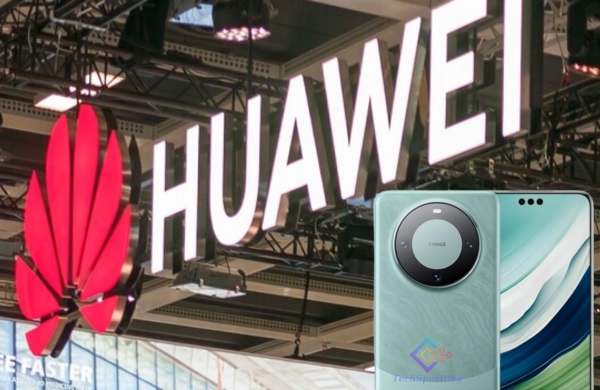
Huawei, in collaboration with China’s top chipmaker, has introduced its latest smartphone, the Mate 60, powered by an advanced processor. The revelation, made last week, highlights China’s progress in circumventing U.S. restrictions on critical technology access, especially for Huawei, which has faced increasing scrutiny and trade curbs from the United States, citing national security concerns.
Huawei’s re-entry into the smartphone market with the Mate 60 raised numerous questions about the source of its advanced chips, particularly since the company had previously struggled due to its inability to access the most sophisticated chips, similar to those powering popular devices like the iPhone. Unlike many tech companies that readily divulge specifications, Huawei remained tight-lipped about the key technical details of its new phone.
Also Read: IFA 2023 Showcases Innovation in Smart Home and Sustainability
SMIC’s achievement in producing a processor using seven-nanometer technology exceeded expectations, defying earlier assumptions about its capabilities. This breakthrough represents a significant step forward for China, as it showcases the nation’s ability to surmount the export controls imposed by the U.S., particularly for Huawei, a company blacklisted by the U.S. government.
HISTORIC: Huawei’s Mate 60 Pro uses 100% Chinese-made components, incl’ chips. 🇨🇳
It was released the day US Secretary of Commerce Gina Raimondo — behind sanctions stopping China importing certain chips — visited Beijing.
Sanctions against China will only bite Washington’s ass. pic.twitter.com/0zgekmyYnZ
— Andy Boreham 安柏然 (@AndyBxxx) August 30, 2023
The importance of the advanced chips in the Mate 60 cannot be understated. It underscores China’s faster-than-anticipated progress in adopting cutting-edge chip technology, with seven-nanometer chips now being produced domestically, a capability considered unthinkable just a few years ago. This development challenges the U.S. administration’s efforts to limit China’s access to advanced semiconductor technologies.
Nevertheless, numerous questions remain unanswered. The volume of seven-nanometer chips SMIC can manufacture and whether they can compete cost-effectively on the global market remains uncertain. However, this achievement suggests that China is making strides in a contentious area where the U.S. has attempted to curtail its technological advancement.
The news of the Huawei Mate 60’s advanced chip has not gone unnoticed in the geopolitical arena. It is likely to garner the attention of the U.S. government, particularly the Commerce Department, which has been actively implementing trade restrictions on China. This development may force a reevaluation of the effectiveness of existing sanctions.
Also Read: Lenovo Joins the Handheld Gaming PC Craze in 2023 with Legion Go
China’s state media swiftly embraced this technological milestone, signaling the country’s confidence in its ability to make progress in semiconductors and other advanced technologies independently, even in the face of severe U.S. sanctions.
As Huawei’s Mate 60 disrupts the global smartphone market with its advanced chip, the clash between Beijing and Washington over technology and trade shows no signs of abating. The world watches closely as China challenges the limits of U.S. sanctions and continues to make strides in the realm of cutting-edge technology.

Leave a Reply